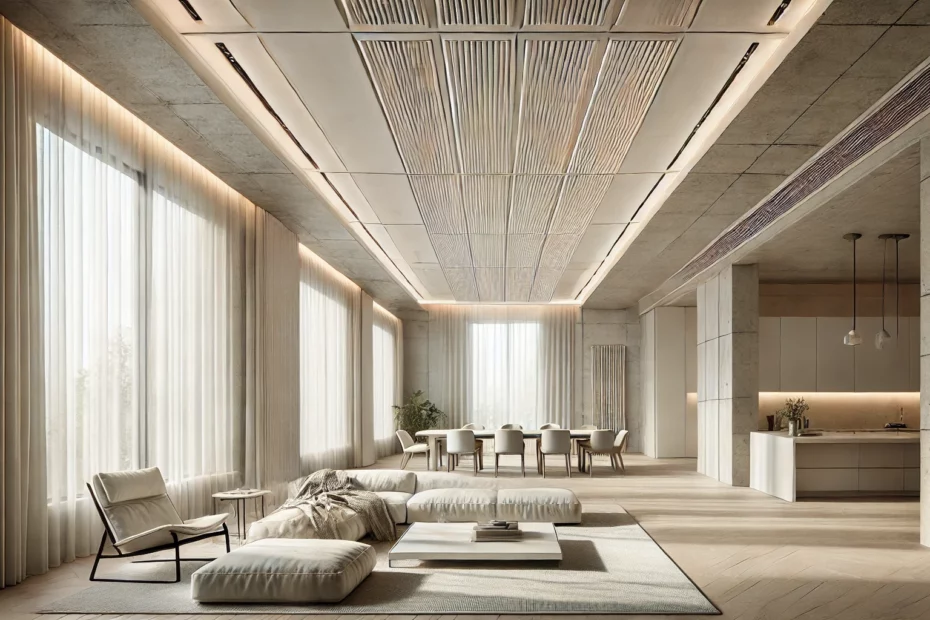Plaster Radiant Ceiling (PRP) is a heating solution that combines thermal performance with aesthetic integration. Suitable for contemporary interiors, this infrared radiant heating system integrates directly into the ceiling, ensuring optimum comfort while remaining invisible. But why is it particularly suited to modern residential spaces?
In this article, we’ll explore the specific benefits of PRP and why it’s emerging as a relevant choice for today’s homes.
Plaster Radiant Ceiling (PRP) features
The PRP is a radiant heating system designed to be integrated into plasterboard panels, installed directly on the ceiling. This heating method works by infrared diffusion, which means it heats objects, surfaces and people directly, without passing through the ambient air. This method ensures even heat distribution, eliminating cold spots in the room.
PRP is a discreet solution, as the plaster panels can be painted or decorated to blend in with the décor of any interior. This system therefore combines functionality and aesthetics, meeting the requirements of modern residential spaces.
Adaptable to modern spaces
One of the major advantages of Gypsum Radiant Ceiling is its ability to adapt perfectly to modern interiors. In contemporary homes, where clean aesthetics and open spaces are favored, PRP integrates effortlessly. Unlike other heating systems, it takes up no floor or wall space, allowing greater freedom in the layout of spaces.
What’s more, the absence of visible radiators frees up space, creating a minimalist, orderly atmosphere. This system is ideal for living rooms, bedrooms or spaces with high ceilings, where aesthetics and thermal comfort are essential criteria.
Installation and maintenance: a durable, practical solution
Gypsum Radiant Ceiling is not only high-performance, but also easy to install and maintain. The installation of PRP panels can be carried out in new buildings or during renovations, thus integrating into a variety of residential projects. Once installed, the panels require very little maintenance. As radiant heating is a system with no moving parts, it is particularly reliable and does not require frequent maintenance.
In terms of durability, the PRP is designed to operate for many years, with consistent energy efficiency. Thanks to its plaster design, this heating system is also eco-responsible, using environmentally-friendly materials.
A solution for improving energy efficiency
In addition to its aesthetic integration, PRP contributes to improving theenergy efficiency of residential spaces. Radiant heating is renowned for its ability to heat a room quickly, while consuming less energy than traditional convection systems. By heating objects and people directly, GWP prevents heat loss and ensures constant thermal comfort.
For households looking to reduce their energy consumption and heating bills, Gypsum Radiant Ceiling Heating is a sensible option. It helps maintain a pleasant temperature while using fewer resources, making it an environmentally-friendly and economical solution in the long term.
- What is a hydraulic heating ceiling? Definition and operating principles
- Hydraulic ceiling heating vs. underfloor heating: Which solution is more efficient?

- The advantages and disadvantages of hydraulic ceiling heating: Complete guide

- The Myth of Rising Heat: Demystifying and Explaining the Heated Ceiling

- Radiant Heating Ceilings : The Revolutionary Efficiency of an Unprecedented System


